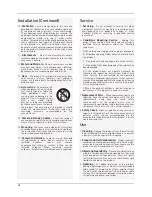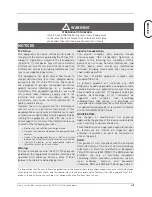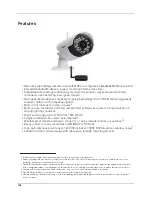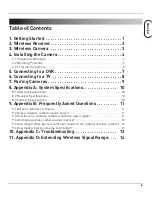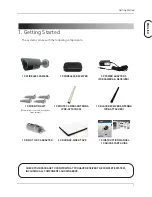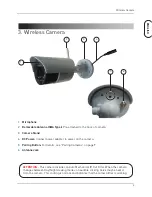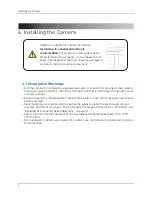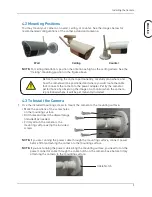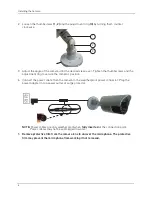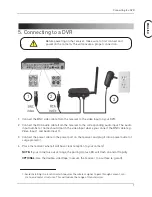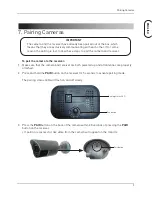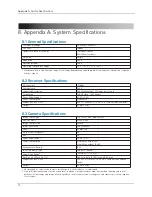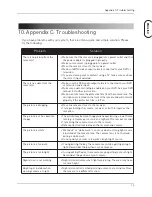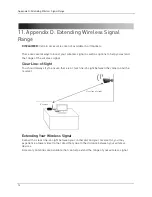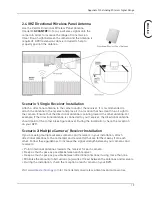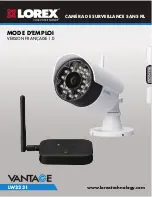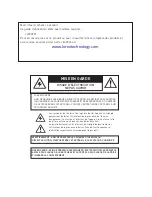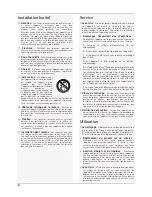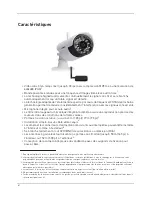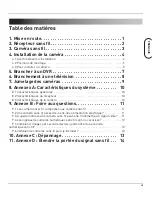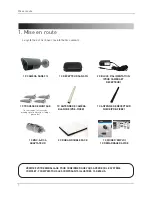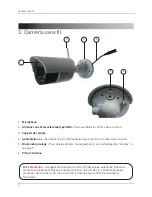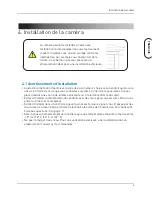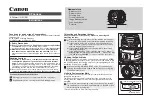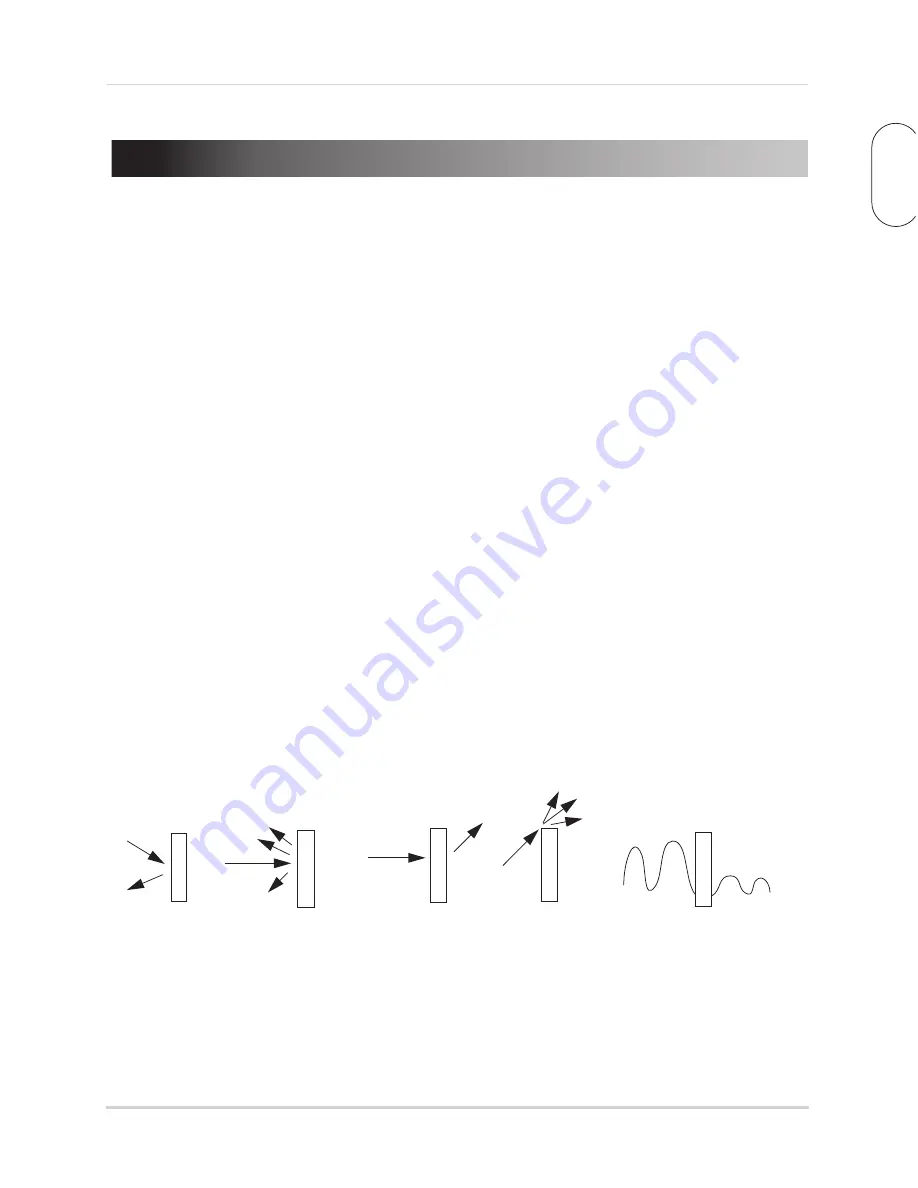
11
Appendix B: Frequently Asked Questions
ENGLISH
9. Appendix B: Frequently Asked Questions
9.1 Wired vs. Wireless Cameras
A
wired camera
has a video cable that transmits the video signal from the camera to a
recording or viewing device.
A
wireless camera
does not use a video cable. Instead, it wirelessly transmits the video
signal to a wireless receiver that is connected to your DVR. Wireless cameras do not
require video cabling to be run between the camera and the DVR, which reduces
installation time and cost.
9.2 Does a wireless camera require power?
Yes. Wireless cameras require two power sources: one connected to the camera, and the
other to the receiver. The term "wireless" refers to the lack of a video cable between the
camera and the receiver.
9.3 How far can a wireless camera transmit a video signal?
In an open field (with line of sight), a typical wireless camera has a range between 250 - 500
feet. 'Line-of-sight' means that there are no obstructions between the camera and
receiver. Obstructions include walls, buildings, trees, and certain electronic devices.
Materials containing moisture (for example, leaves) may also act as an obstruction. Cubical
walls, drywall, glass, and windows generally do not degrade wireless signal strength.
In a closed environment—such as the interior of a house—the wireless camera range is
between 100 - 165 feet. The signal range varies depending on the type of building materials
or objects the wireless signal must pass through. The signal range also depends on
whether there are competing signals using the same frequency as the camera. For
example, signals from cordless phones or routers may affect signal strength. Adaptive
Frequency Hopping Spread Spectrum (FHSS) technology featured in the latest Lorex
models greatly reduce signal interference.
Range Limiting Factors
1
Reflection
The signal
reflects back
Scattering
The signal scatters
back into multiple
new signals
Refraction
The signal bends
as it travels
through an
object (e.g. glass
window)
Diffraction
The signal
changes direction
as it passes
around an object
Attenuation
The signal
strength weakens
as it passes
through an object
1
Source:
Xirrus (2010). "Wi-Fi Range Dynamics".
Retrieved online at http://xirrus.gcsmarket.com/pdfs/Xirrus_Wi-Fi_Range.pdf
Summary of Contents for Vantage LW2231
Page 71: ......

